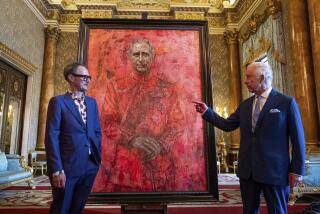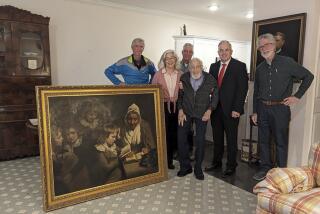HISTORIANS REJECT CLAIM THAT PAINTING BOUGHT BY GETTY IS FAKE
- Share via
LONDON — A college lecturer in Scotland said Wednesday that the world’s most expensive painting, which cost the J. Paul Getty Museum in Malibu $10.5 million, is a 19th-Century fake. But experts who know the Italian Renaissance picture dismissed the claim.
“We have no doubts whatsoever about the authenticity of the painting,” said Getty spokeswoman Carla Boyer. “We will be very pleased to add it to our collection.”
The claim is “absolute rot,” according to Timothy Clifford, director of the National Gallery in Edinburgh, where Andrea Mantegna’s “Adoration of the Magi” is on display.
Clifford is trying to stop the painting’s export to the United States, in the belief it should remain in Britain.
“What’s a drawing teacher in Dundee doing in challenging some of the best art historians in the world, engaged by this very rich museum to make sure it was justified in spending all that money?” Clifford asked in a telephone interview.
His comment followed a public lecture by Peter Collins at the Duncan of Jordanstone College of Art in Dundee. Collins, 50, spoke about his doubts after arguing his case in letters to newspapers.
The Times of London devoted half a page to the subject Wednesday. “No one agrees with Collins so far,” wrote the newspaper’s art sales reporter, Geraldine Norman.
William Mostyn-Owen, who catalogued the work when it was sold by Christie’s art auction house April 18, said he considered Collins’ arguments “nonsensical.”
Among Collins’ arguments are that the work is much too flat looking to be by Mantegna, and that a Chinese bowl in the picture is of a style unknown in Europe around 1500.
He said that turbans worn by the Magi are not those of Mantegna’s day and that Mary should be wearing a shawl, as in other pictures of the period, and not a turban.
More to Read
The biggest entertainment stories
Get our big stories about Hollywood, film, television, music, arts, culture and more right in your inbox as soon as they publish.
You may occasionally receive promotional content from the Los Angeles Times.










